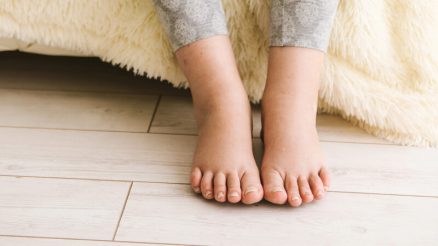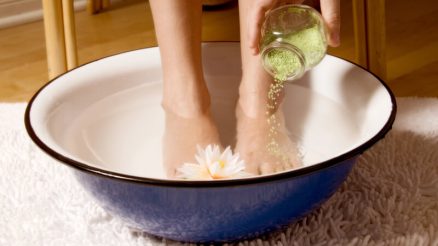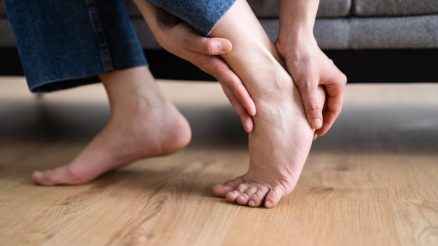Our feet are remarkable structures, bearing the brunt of our daily activities, from leisurely strolls to intense workouts. Yet, we often take them for granted until discomfort sets in. Foot pain is a widespread complaint, affecting people of all ages and lifestyles. It can range from a dull ache to a sharp, debilitating agony, significantly impacting mobility and quality of life. Understanding the common culprits behind this pain is the first step towards finding relief and preventing future issues.
Let’s explore some of the most frequent causes of foot pain:
1. Plantar Fasciitis: The Morning Misery
One of the most prevalent causes of heel pain, plantar fasciitis, involves inflammation of the plantar fascia – a thick band of tissue running along the bottom of your foot, connecting your heel bone to your toes.
- Symptoms: Typically characterized by a stabbing pain in the heel, especially with the first steps in the morning or after a period of rest. The pain often lessens with activity but can worsen after prolonged standing or exercise.
- Causes: Common factors include tight calf muscles, high arches or flat feet, obesity, prolonged standing or walking, and inappropriate footwear that lacks arch support.
2. Bunions: The Bony Bump
A bunion (hallux valgus) is a bony bump that forms on the joint at the base of your big toe. It occurs when your big toe pushes against your next toe, forcing the joint to stick out.
- Symptoms: Pain, swelling, redness, and tenderness around the big toe joint. Corns or calluses may develop where the first and second toes rub together.
- Causes: Often hereditary, but ill-fitting, narrow, or high-heeled shoes can exacerbate the condition by crowding the toes. Certain foot deformities or inflammatory conditions like arthritis can also contribute.
3. Hammertoes: The Bent Digits
A hammertoe is a deformity that causes your toe to bend or curl downward instead of pointing straight. It most commonly affects the second, third, or fourth toe.
- Symptoms: Pain or irritation when wearing shoes, especially over the bent joint. Corns or calluses can form on top of the affected joint or at the tip of the toe.
- Causes: Muscle imbalance in the foot, ill-fitting shoes (especially those with a shallow toe box), and nerve damage can lead to hammertoes.
4. Achilles Tendinitis: The Heel Cord Hurdle
Achilles tendinitis is an inflammation of the Achilles tendon, the strong band of tissue connecting your calf muscles to your heel bone. It’s a common injury, particularly among runners and athletes.
- Symptoms: Pain and stiffness along the Achilles tendon, especially in the morning or after activity. The pain may worsen with increased activity.
- Causes: Overuse, sudden increase in activity intensity or duration, tight calf muscles, bone spurs on the heel, and improper footwear are common culprits.
5. Metatarsalgia: Forefoot Fury
Metatarsalgia is a condition in which the ball of your foot becomes painful and inflamed. It typically affects the area just behind your toes.
- Symptoms: Sharp, aching, or burning pain in the ball of your foot, often worse when standing, walking, or running, and improves with rest.
- Causes: High-impact activities, ill-fitting shoes (especially high heels or shoes with insufficient padding), high arches, hammertoes, bunions, and stress fractures can contribute to metatarsalgia.
6. Morton’s Neuroma: The Nerve Nuisance
Morton’s neuroma is a painful condition that affects the ball of your foot, most commonly the area between your third and fourth toes. It occurs when the tissue around a nerve leading to your toes thickens, causing a sharp, burning pain, often accompanied by numbness or tingling.
- Symptoms: Feeling like you’re standing on a pebble in your shoe, or a fold in your sock. Pain that worsens with activity or wearing tight shoes.
- Causes: High heels, narrow shoes, foot deformities, and repetitive stress can compress the nerve and lead to neuroma formation.
7. Stress Fractures: The Tiny Cracks
Stress fractures are tiny cracks in a bone, most commonly found in the weight-bearing bones of the foot and lower leg.
- Symptoms: Pain that worsens during activity and lessens with rest. Swelling and tenderness around the affected area.
- Causes: Overuse, sudden increase in intensity or duration of exercise, repetitive impact on hard surfaces, and conditions that weaken bones (like osteoporosis) are common causes.
8. Arthritis: Joint Aches and Pains
Arthritis, an inflammation of the joints, can affect any of the 30-plus joints in the foot and ankle, leading to significant pain and stiffness.
- Symptoms: Joint pain, swelling, stiffness, and reduced range of motion. The pain may be worse in the morning or after periods of inactivity.
- Types: Osteoarthritis (wear-and-tear arthritis), rheumatoid arthritis (an autoimmune disease), and gout (a form of inflammatory arthritis) are common forms that can affect the feet.
9. Ill-fitting Footwear: The Hidden Hazard
Perhaps the most easily preventable cause of foot pain, wearing shoes that don’t fit properly can lead to a multitude of problems.
- Issues: Shoes that are too tight can cause bunions, hammertoes, and neuromas. Shoes that lack adequate support can contribute to plantar fasciitis and Achilles tendinitis. High heels alter the foot’s natural alignment and place excessive pressure on the forefoot.
- Solution: Prioritize comfort and proper fit. Look for shoes with good arch support, adequate cushioning, a wide toe box, and a stable heel.
When to Seek Professional Help
While many cases of foot pain can be managed with rest, ice, elevation, and over-the-counter pain relievers, it’s crucial to know when to consult a healthcare professional. You should seek medical attention if:
- Your pain is severe or doesn’t improve with self-care.
- You notice swelling, redness, or tenderness that indicates infection or inflammation.
- You have diabetes or another condition that affects circulation, as foot issues can be more serious.
- You experience numbness or tingling.
- You can’t bear weight on your foot.
Stepping Forward
Our feet are complex and crucial for our mobility. Paying attention to their health, choosing appropriate footwear, and addressing pain promptly can make a significant difference in preventing chronic issues and maintaining an active, pain-free lifestyle. Don’t let foot pain hold you back – understanding its causes is the first stride towards lasting relief.








